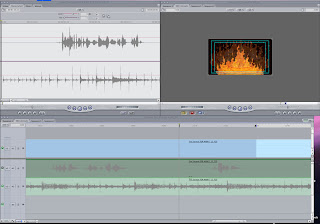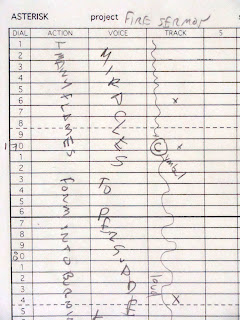Here's part two of three of this essay from 2002.
I should also thank Chris Robinson for publishing it. I should also admonish him for not telling me how poorly written it is.
********

A deep strain of pessimism has grown prominent in anime culture since the 1960s. Mirroring the exponential violence of Hollywood sequels, many series are typified by an explosive nihilism. The 1970s brought future classics of destruction like "Mobile Suit Gundam" and "Star Blazers". Series began to display an ultra-violence designed primarily to appeal to the active juvenile destructive impulses of teenaged boys. [EDIT: phew! <--- What a rotten sentence.]
Home video games -also produced overwhelmingly out of Japan -are closely tied to the giant killer robot brand of anime. The bos at AnimeNext crow the game tables. Girls wander the whole sales floor, giving each vendor a piece of time. The game table, the medieval wands, the earrings, the books, the DVDs all appeal equeally. Take off a girl's cat ears and replace her laser gun with a cel phone and she might as well be in the shopping mall.
Television programmers have a rule; boys will only watch boy shows, but girls will watch shows for girls and boys. So American broadcasters make boys' shows. This rule doesn't apply. Some titles are strictly girl territory. "Sailor Moon's" audience is mostly, but not exclusively, girls. "Sailor Moon" is a starter drug. A girl's first costume is usually a Sailor Jupiter or Venus or Saturn. They move up to the robot in a teddy with cat ears from "Chobits". Hollywood studios would consider a show like "Chobits" (a sort of "I Dream of Jeannie" with a robot and a teenager) strictly female material. In reality, its popularity crosses gender lines. The premises behind there shows generally involve girls with special powers who are secretly in love with and secretly loved by awkward yet beautiful boys.
The only gender indentifiable hero that a young girl from Kansas sees on television is "Buffy the Vampire Slayer". Buffy never reaches the depth of gloom in the typical anime. A standard show like "Bubblegum Crisis 2040" pits four women in killer bodysuits against a power grabbing corporation with an army of robot monsters. The women are mercenary and the bad guys often come out on top. "Bubblegum Crisis" is just one entry in a long catalog of powerful female heros. It may not be the most
popular show. It may not even broadcast in the United States, but there are plenty of homemade costumes of its heroines.

"Neon Genesis Evangelion", a popular title, is set following a planet wide catastrophe when the remaining humans are under attack from space aliens called "Angels". Humanity's only defense is a group of children who symbiotically fuse with machines to fight off the attackers. The hero is a boy, but the stars of the show and the most popular characters are girls. Earth's survival relies on the whims of teen melodrama and the dynamics of these kids. Not the cartoonish stupidities of television angst -which girl will Zack take the dance and will Screetch ever grow up? - the children of "Neon Genesis Evangelion" are bred to destroy. They battle their own emotional dysfunction. One film opens with the hero masturbating by the hospital bed of his rival and secret crush. The adults, mostly scientists, are manipulative, impotent figures who send the children on suicide missions while remaining safely harbored in an impenetrable fortress. The hero is eventually called on to kill the only being who ever expressed affection toward him. A Victorian melodrama played by Japanese cartoons: "Each man must kill the thing he loves..."
















































